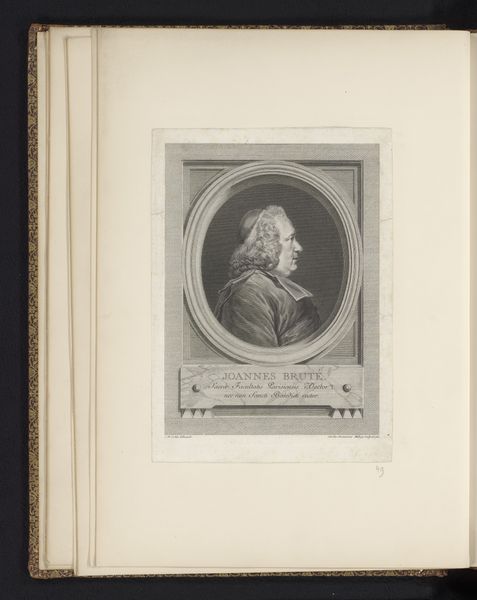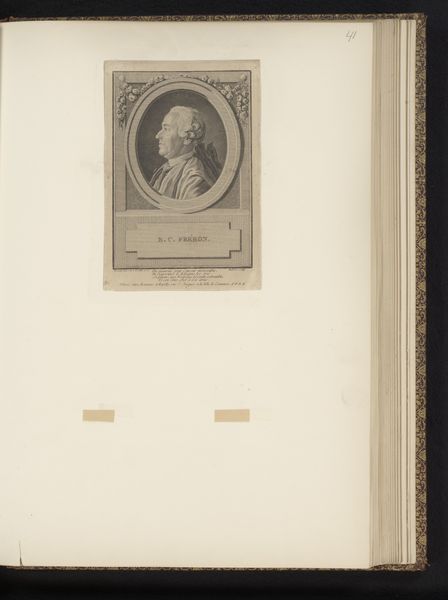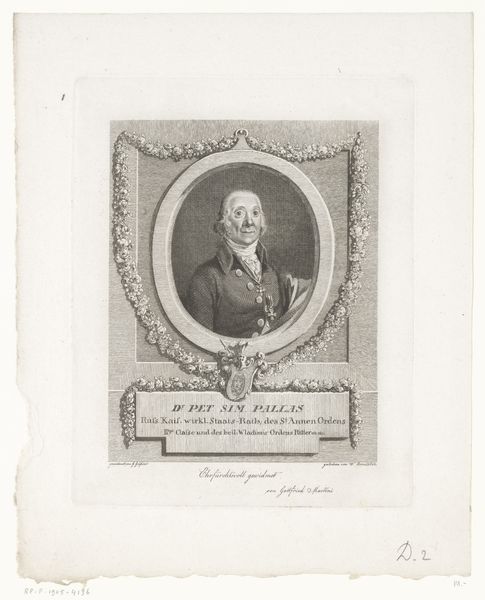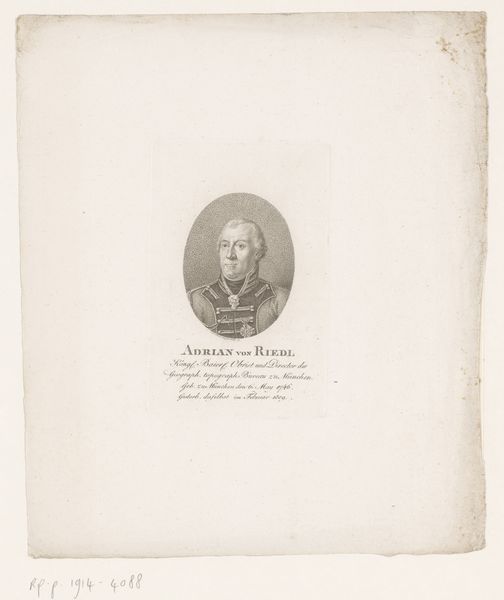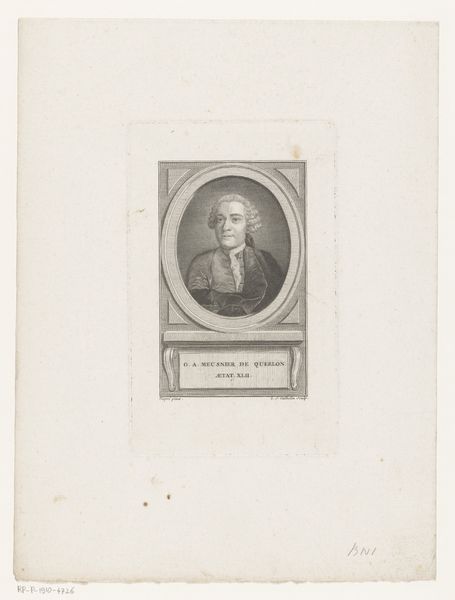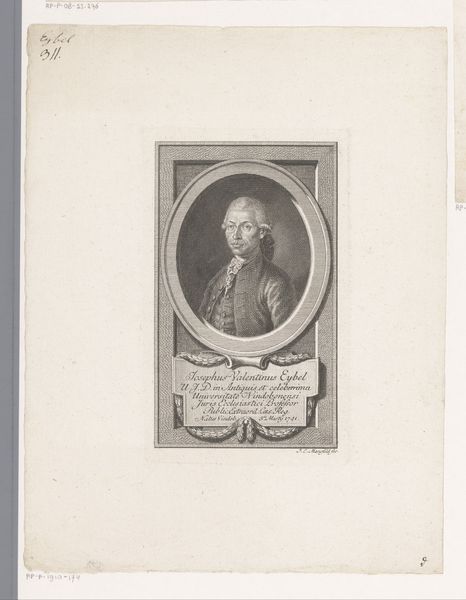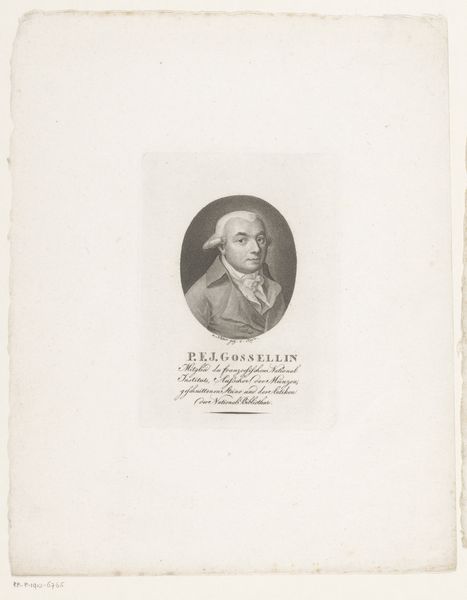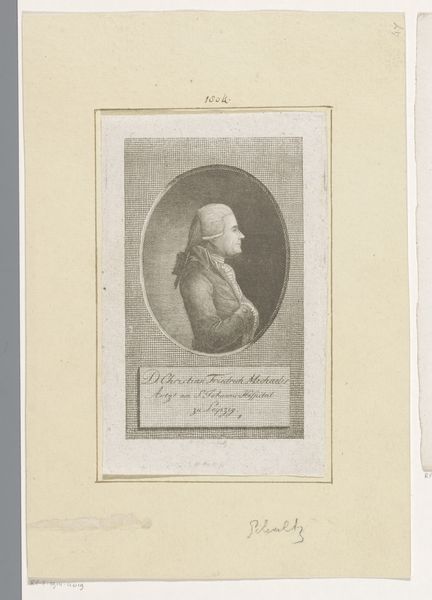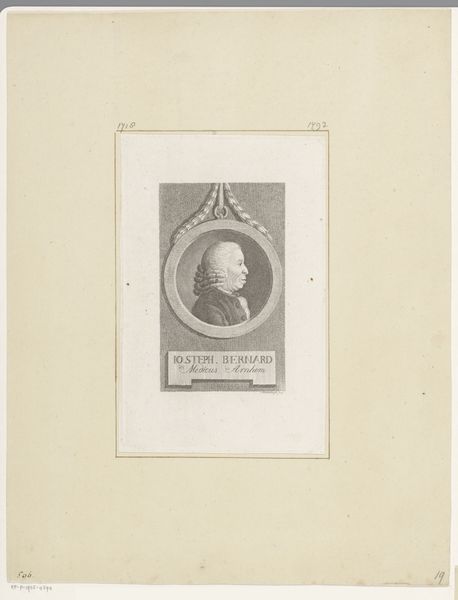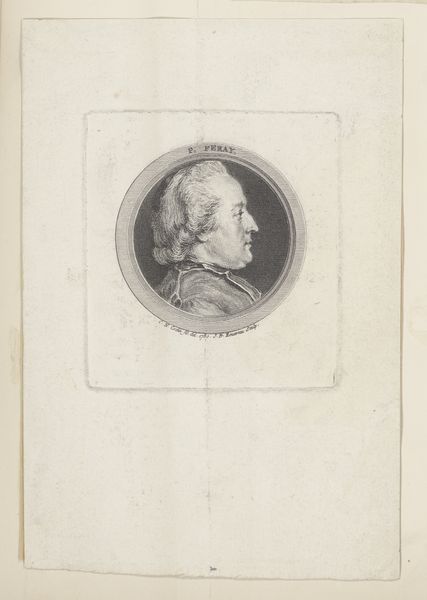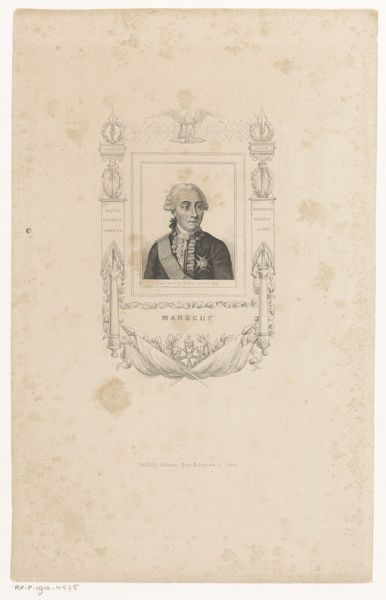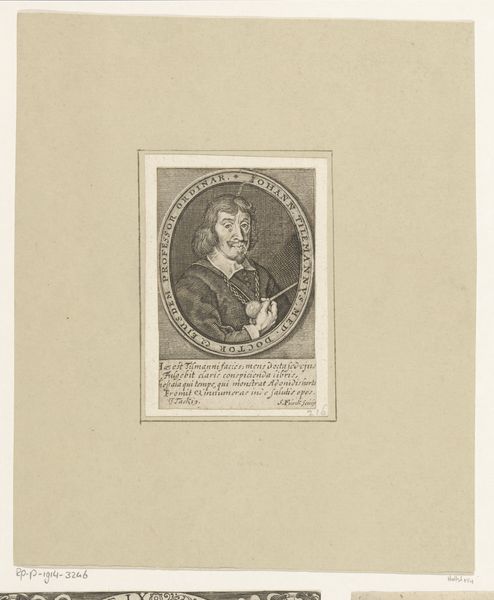
Dimensions: height 222 mm, width 156 mm, height 284 mm, width 442 mm
Copyright: Rijks Museum: Open Domain
Curator: Look at the incredible detail in this 18th-century engraving. What are your initial impressions of "Portret van graaf Louis Marie van Welderen," created between 1782 and 1784? Editor: Somber. Even in the stylized round frame, that's quite an austere portrait. I notice how tightly the figure is cropped and framed by maritime symbols. Curator: Indeed. The print, now housed at the Rijksmuseum, reflects the period's fascination with representing status through portraiture, while the inclusion of anchors and navigational tools highlights the sitter’s military rank, framing it within a historical context marked by maritime conflicts and the Dutch Republic’s naval power. The other panel offers descriptive text framed decoratively. Editor: And see how the engraver has used hatching to model form, giving depth to the face despite the starkness of the medium? The lines are so fine! Note the inscription on the stone plinth and the surrounding accoutrements: compass, naval dividers... each one adds a level of meaning. Curator: This engraving becomes a narrative, doesn’t it? The sitter, Louis Marie van Welderen, gains notability for commanding the warship, Ajax, in the Dogger Bank battle of 1781. This engagement with Britain underscored complex relationships of Dutch history, where familial status, naval heroism, and national identity intersected, influencing the period’s art. Editor: The very specific maritime reference points serve a semiotic purpose here. They aren't just decorations; they actively define this person and elevate him in society's eye. It's an almost architectural composition: bust portrait at top, framed setting below. It feels rigidly structured. Curator: Exactly! How societal expectations regarding gender also play a role. Van Welderen's authority derives from both his noble birth and demonstrated military capabilities. That combination creates a potent image reflective of its time and helps reveal prevailing norms surrounding leadership roles within the Dutch Republic. Editor: It makes you wonder, too, what nuances might be missing—or more accurately, obscured. This level of formal restraint is compelling from a purely compositional standpoint. But from our different vantage points, our discussions bring to light additional dimensions in what initially appeared a stiff representation. Curator: Agreed! Studying the art allows to think through cultural power structures that affect individuals. By investigating his place, can we develop fresh understandings.
Comments
No comments
Be the first to comment and join the conversation on the ultimate creative platform.
